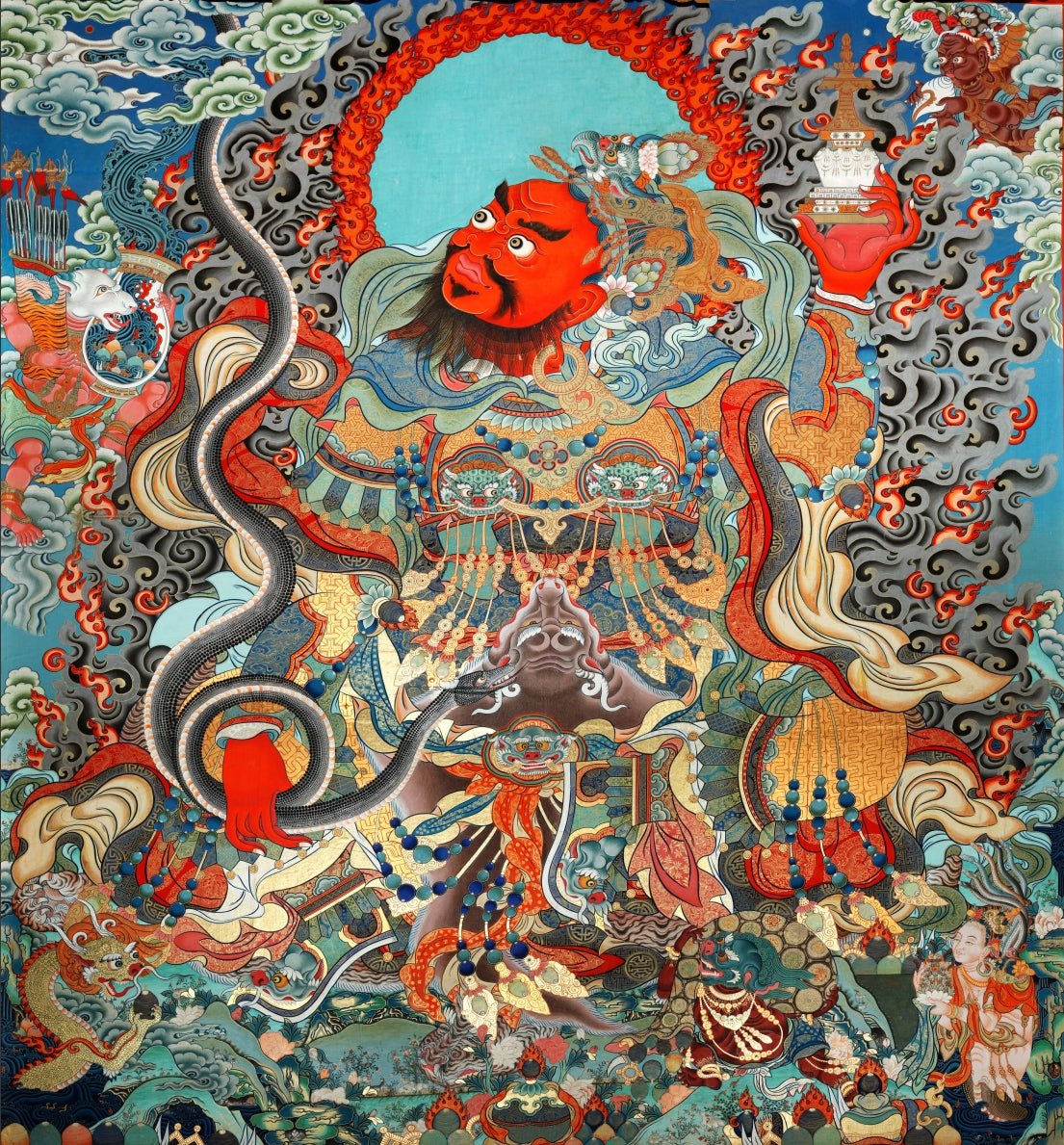
Uncovering Tibetan Thangka Murals in Maitreya Hall
🌸 The Maitreya Hall Thangka Murals: Art, History & Devotion
Walking into a Tibetan monastery’s Maitreya Hall, you’re surrounded by Thangka murals depicting Maitreya Buddha—the embodiment of loving kindness and hope for the future.
These murals are more than paintings. They are living scriptures in color, teaching compassion through sacred art.
🕯️ Explore our Thangka Pendant Collection—miniature sacred paintings inspired by the same tradition that fills Maitreya Halls across Tibet.
🖌️ 1. Origins & Artistic Tradition
Historical Roots:
Starting in the 8th century, Tibetan artists created Thangka murals and hand-painted pendants to spread teachings of enlightenment.
Artisanal Craft:
Using natural mineral pigments, gold leaf, and meticulous brushwork, artisans brought these visions to life. Today, modern crystal pendants and energy stone necklaces capture similar energetic frequencies.
(Image ALT: “Tibetan Maitreya Hall mural with gold and mineral pigment detailing”)
🪷 2. Spiritual Symbolism & Key Imagery
Maitreya’s Throne:
Maitreya sits upon a lotus throne, flanked by Bodhisattvas and 108-bead mala strands. This symbolizes hope, rebirth, and compassion’s dawn.
Heavenly Realms:
Behind him, the Three Realms—Desire, Form, and Formless—represent states of consciousness, mirrored in the layers of Tibetan talisman pendants.
Offerings & Rituals:
Murals often portray Tibetan silver amulets, crystal bowls, and water offerings, inviting devotees to cultivate generosity and mindfulness.
💎 Reconnect with these symbols through our Tibetan Bracelets Collection—each one infused with mantra energy.
🧘 3. Meditation & Mindfulness Benefits
Visual Mantra:
Gazing at a Thangka mural becomes an act of meditation. Like a mindfulness bracelet, following Maitreya’s gaze grounds your mind in peace.
Energy Alignment:
Maitreya Halls are designed as vortexes of balance, much like energy healing bracelets that harmonize the body’s subtle fields.
Daily Inspiration:
Many practitioners wear mini Thangka pendants or Bodhi seed bracelets as portable blessings, keeping Maitreya’s compassion close throughout the day.
🎨 4. Collectibility & Contemporary Practice
Portable Art:
From fashion mala bracelets to micro Thangka pendants, Tibetan artisans now craft wearable Thangka art, merging devotion with design.
Empowered Jewelry:
Many monasteries offer lama-blessed jewelry—Tibetan prayer beads, crystal amulets, and silver bracelets that transmit temple blessings outward.
Cultural Preservation:
Supporting these artisans ensures the survival of Thangka craftsmanship and Tibetan heritage amid globalization.
🪷 Bring the spirit of the monastery home with our Tibetan Artwork Collection.
🌟 5. Modern Advantages for Practitioners
Home Altar Décor:
High-quality Thangka wall hangings bring Maitreya’s compassionate energy into your space. Pair them with Buddhist silver pendants and energy healing crystals for enhanced effect.
Wearable Devotion:
A 108-bead mala or cosmic energy necklace inspired by these murals becomes your on-the-go mindfulness tool.
Gift of Blessing:
From embroidered Thangka pins to crystal blessing wands, these make heartfelt gifts for spiritual friends and family.
🌸 Discover Fashion Accessories with Spirit—where devotion meets modern design.
🕊️ Final Thought
The Maitreya Hall Thangka murals stand as masterpieces of devotion, history, and compassion.
Each brushstroke carries centuries of wisdom. When paired with Tibetan bracelets, crystal jewelry, or Thangka-inspired pendants, that legacy becomes part of your daily mindfulness journey.
🌼 Carry the Future Buddha’s promise wherever you go—let Maitreya’s compassion guide your path toward awakening. 🌟
🧠 F.A.Q. — Common Questions About Maitreya Thangka Murals
Q1: Who is Maitreya Buddha?
Maitreya is the Future Buddha, representing unconditional love and hope for humanity’s spiritual evolution.
Q2: Why are Thangka murals important in Tibetan Buddhism?
They serve as visual scriptures that preserve teachings, symbols, and spiritual energy.
Q3: Can Thangka art be worn or displayed at home?
Absolutely! Mini Thangka pendants or wall hangings are popular for home altars or personal devotion.
Q4: What materials are used in traditional murals?
Natural mineral pigments, gold leaf, yak glue, and handmade cotton canvas.
Q5: How do wearable Thangka designs support artisans?
Purchasing handcrafted pieces sustains Tibetan artists and monasteries, preserving ancient traditions.





